87% of B2B marketers use email marketing as a distribution channel — it’s become a cornerstone of communication that most businesses can’t live without. But what happens to your emails after you hit “send”? That’s where email tracking software helps.
Email tracking is an essential tool for measuring the impact of your communications with customers and subscribers. It helps you know whether your emails are delivering results.
With email tracking software, you can see exactly how customers interact with your emails, allowing you to fine-tune your communications to drive more traffic and improve sales and conversions.
In this guide, we’ll review what to look for in email tracking software, as well as our top recommendations you can start using for free.
What Is Email Tracking Software?
Sending an email can sometimes feel like throwing a letter off a cliff. Where will it end up? Will anyone read it? And how can you find out?
The early days of email marketing were plagued with this very uncertainty.
Email Marketing Before Tracking Software
Without email tracking software, marketing departments had no way of knowing whether a recipient opened, read, or clicked an email– assuming, of course, it even made it to their inbox. As a result, email marketing came down to guesswork and trial and error.
Thankfully, the days of blindly sending off emails are long behind us. With a wide selection of email tracking software now available, it’s easier than ever to track emails long after they’re sent.
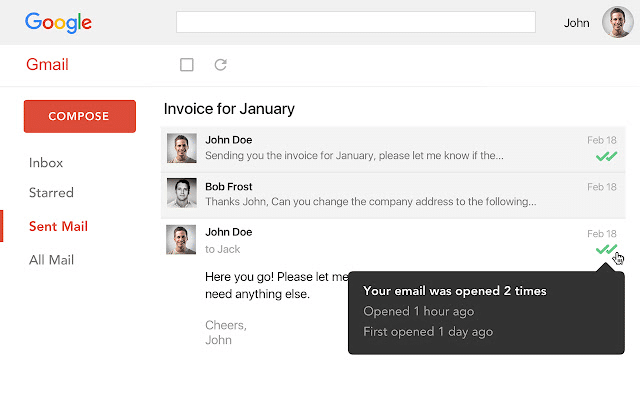
But what does email tracking software do exactly? While “tracking emails” is technically the correct answer, there’s much more to email tracking than meets the eye.
What Does Email Tracking Software Do?
Email tracking software tracks email opens, link clicks, and more. While tracking functions and options vary slightly between software packages, most offer the same basic features.
- Tracks email clicks and more. Most email trackers track activity through open tracking, where an invisible tracking pixel is attached to your emails. This pixel keeps track of the date and time and sends a real-time notification once it’s viewed (i.e., the email is opened/read).
While most email trackers will let you keep track of more than just opened emails (such as link clicks, for example), this function serves as the foundation for most available software.
Most software packages also include click tracking. Here, instead of an invisible pixel, links embedded in your email are sent through a tracking URL. When a recipient clicks the link, they visit the URL, and your tracking software receives a notification.
Some software also includes activity tracking, which tracks the emails and inboxes of either yourself or others in your organization. However, since this is different from what most email tracking software provides, we’ll primarily focus on open tracking and click tracking instead.
- Monitors email activity and interactions. Every email you send can keep track of user activity between open and click tracking. Depending on the software you choose, you’ll get real-time notifications whenever a user opens an email, clicks a link, or, in some cases, deletes the email or sends it to their spam folder.
- Logs contact activity and lead records. Email tracking doesn’t end at notifications. Instead, most software also maintains complete records for every contact in your campaign, allowing you to see how well and how often each of them interacts with your communications.
Some software can even help you organize your email marketing campaigns by building targeted lists of people who are more likely to respond well to certain types of emails.
- Delivers valuable data and insights. You can generate insights and trends for entire campaigns or individual leads with plenty of tracking data available. This information can help you further refine your email communications and build better relationships with your customers.
- Allows you to compare different email formats and approaches. Though most software doesn’t include A/B testing as a built-in feature, email tracking will enable you to compare different formats, messages, subject lines, and approaches in your campaigns. As a result, email tracking software can be a handy tool for A/B testing.
Together, these features make email tracking an invaluable part of any email marketing campaign. Read on to learn some of the most significant benefits.
Benefits of Email Tracking Software
As you might imagine, knowing how your prospects, leads, and contacts interact with your emails comes with many benefits. Here are just a few.
Saves Time and Money
While “saving time and money” might be the most commonly (and falsely) advertised benefit of any product, it’s one of the enormous benefits of email tracking software.
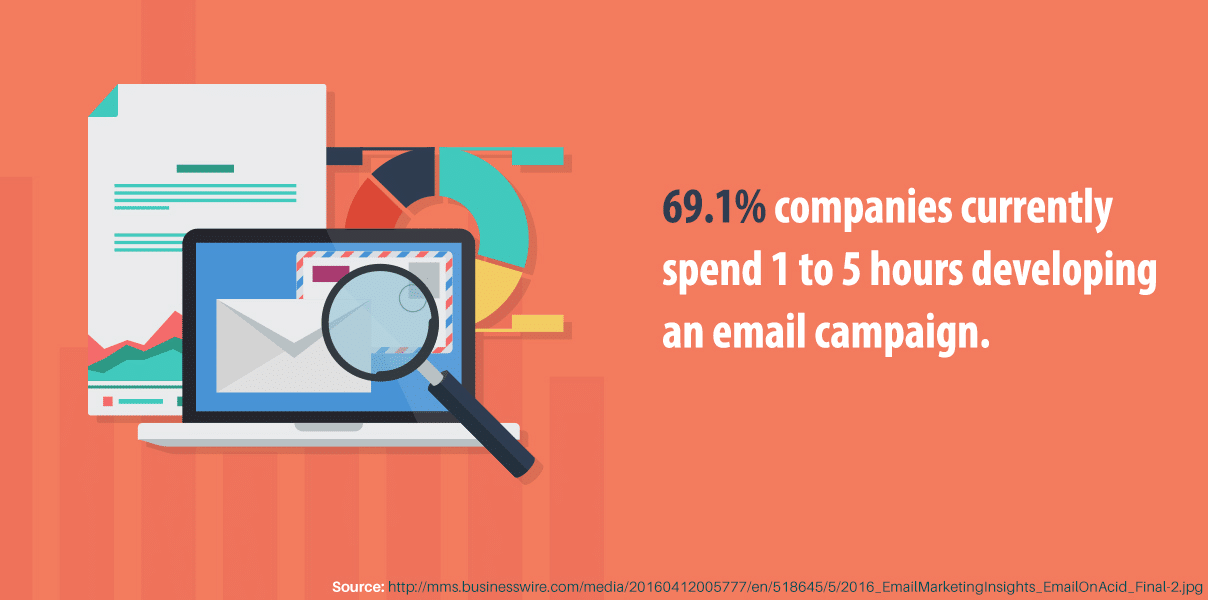
Communication takes time, especially when pursuing a prospect or trying to entice a lead. When you don’t get the response you expect, it’s usually best to send multiple follow-up emails to encourage a reply. But are numerous follow-ups really worth your time?
It depends. Sending at least one follow-up email can boost reply rates from 9% (with no follow-up) to 13%, with experienced marketers enjoying even larger increases in responses. While that’s a promising statistic, it assumes that the recipient read the first email in the first place.
As a result, many email marketing campaigns end up wasting valuable time, money, and other resources sending follow-up emails to those who weren’t interested. That’s where email tracking software comes in.
With email tracking software, you can immediately identify recipients who didn’t open the first email, helping you avoid sending follow-ups that would probably be ignored. Filtering through non-responders also allows you to build more targeted, personalized campaigns toward contacts who are genuinely interested.
Similarly, knowing whether a recipient clicked a link or downloaded a file is also a good indication that a customer is interested. So, email tracking software lets you focus your time and money on your most promising leads.
Provides Valuable Insights
Email tracking is one of the best ways to gain new insights into your prospects, leads, customers, and other contacts in your networks — and just how well your email marketing efforts are reaching them.
But what insights can email tracking software provide, and how can you leverage them? While open tracking and click tracking deliver fairly cut-and-dry statistics (e.g., open rates, click rates, etc.), leveraging them intelligently can give you a new understanding of how your contacts respond to your email efforts.
Here are some of the most valuable insights you can gain from email tracking software.
- Who’s interacting with your emails. How many of your contacts open your emails? This number is the most fundamental metric in email marketing — and email tracking software is the key to unlocking it.
However, there’s more to this statistic than just seeing who reads your emails. Since most email trackers also log repeated email opens and clicks, you can see if a contact has opened an email multiple times and at what times they opened it.
From this data, you can gauge how interested a contact is and what type of content they engage the most with.
- Leads with the greatest chance of conversion. By simply knowing who reads your emails and who doesn’t, you can instantly identify the most promising leads among your contacts. Repeating this process with additional follow-up emails can further increase the chances of finding a lead who’s ready to buy.
- Best times of day to send communications. Don’t you love getting a sales email at 6:00 am? Nobody does. However, with time zones gradually fading as business becomes more global and decentralized, one person’s 6:00 am is another’s 5:00 pm — or any time in between.
As a result, different contacts will be more active and receptive at certain times of the day. By using email tracking software to keep track of open and click-through rates at various times of day, you’ll be able to identify the optimal times for sending communications.
Knowing this information can help you identify the best time to send follow-ups and other emails that will ultimately help drive conversions.
- Detailed information about your contacts. Many email tracking providers will help you maintain detailed records of prospects, leads, and other contacts. In addition to basic contact information, these records may also include a complete history of emails you’ve sent to them and how they interacted with them all.
- How many recipients clicked links or downloaded files. While an opened email is an excellent first step toward conversions, clickable calls-to-action (CTAs) and file downloads are better indicators.
After all, where many people open emails they aren’t even interested in, only a select few click on links and make downloads. This small group is the prime target of any email marketing campaign, and tracking tools are a great way to find them.
Tracking clicks and downloads aren’t just valid for email marketing, however. Many organizations also use email tracking to ensure that personnel read certain emails and download certain documents. For example, a manager might use email tracking to make sure their employees have read an email or key document before scheduling meetings.
You may also extract even more insights depending on your email marketing strategies. In any case, all of these insights combined can give you profound visibility into your campaign — and some much-needed clarity.
Gives Clarity to Campaigns
It’s easy to lose sight of the big picture between drafting emails, maintaining contact lists, and following up on leads.
With email tracking software, you can always step back from the fine details and view your entire campaign at a glance. By reviewing key statistics at a high level, you’ll gain a new birds-eye view of the effectiveness of your email efforts.
By contrast, running an email marketing campaign without tracking tools makes it extremely difficult (if not impossible) to accurately assess your campaign. Without knowing the percentage of recipients who open emails or click links, there’s no reliable way of knowing how well your emails are driving sales (unless they’re your only marketing channel).
How to Pick an Email Tracking Software
While many email tracking software packages offer similar features, that doesn’t mean they’re made equal.
As email tracking becomes more essential to businesses, tracking tools are becoming a dime a dozen. Keep these qualities in mind when choosing your next email tracking software.
Email Service Compatibility
If you’re looking for tracking software, there’s a good chance you’re already using a specific email client such as Microsoft Outlook or Gmail (read: not your host). As a result, it’s vital to ensure that your chosen software is compatible with your client of choice.
Thankfully, compatibility is hardly an issue regarding email tracking software. As more email clients and platforms move to the web, many tracking tools are sold as simple application extensions. While that may seem less robust, they still pack plenty of tracking power.
In any case, most tracking tools work with most major email clients and vice versa. Many popular email trackers are also available as browser extensions, and some even offer free-to-use options.
Tracking Types
As we’ve seen throughout this guide, there are many ways to track an email. While you may not need every type of tracking tool at your disposal, any decent software package will offer most of them.
At a minimum, be sure that your tracking software of choice offers both open tracking and click tracking. While some tools may also provide activity tracking, this function usually isn’t necessary for email or content marketing.
Also, just like with compatible clients, tracking methods are relatively standard across most available software. Just make sure that the available tracking types align with your campaign goals and strategies.
Tracking Statistics
While it’s great to know when someone opens your email or clicks a link, these statistics are most valuable when they’re gathered over time. By seeing how a contact interacts with your emails at certain times of the day or with certain subject lines and CTAs, you’ll gain a better understanding of what “clicks” (pun intended) with your leads.
As a result, it’s essential to make sure that your email tracking software of choice can maintain thorough records and statistics for every tracking metric, such as open rates, click rates, and so on.
Contact Profiles and History
Personalized email marketing is most effective, and both marketers and customers know it. 80% of consumers say they’re more likely to do business with a company if it offers them a personalized experience.
While email tracking is far from the only tool to personalize communications, it’s still a significant one. To this end, many of the best email tracking tools will maintain profiles and statistics for individual clients, giving you the foundation to send highly personalized communications to potential (or existing) customers.
Privacy
Giving third-party applications access to your inbox can present significant security concerns, especially in enterprise environments. Be sure to check the privacy policy and user reviews for any software before buying or downloading — it could make all the difference for the privacy of both yourself and your contacts.
Pricing and Affordability
Of course, like with any software, it’s crucial to find an affordable solution that fits within your budget.
While many email tracking tools are free to use, free versions often limit the number of emails or contacts you can track. Thankfully, most pro and premium options are relatively affordable, and the cost is often well worth the extra insights.
Your Current Email Marketing Software
If you’re using email marketing software to organize your campaign, you may already have email tracking capabilities at your fingertips. Make sure you check your existing tools first.
Of course, simply because your existing software includes tracking tools doesn’t mean it’s the best tool for the job. In any case, be sure to consider the complete range of available email tracking tools before deciding — and read on to the next section to see our top ten.
Our Top 10 Picks for Email Tracking Software
By now, you should have a good idea of what to look for in email tracking software. So which one should you choose?
While there are tons of options to choose from, we’ve narrowed it down to 10 great choices– two of which are absolutely free.
1. Mailtrack (Free)
With over 1.5 million users worldwide, Mailtrack is the leading free email tracker for Gmail users.

While it’s primarily available as a Chrome extension, don’t think it’s underpowered. In addition to keeping track of open rates, clicks, and other email analytics, Mailtrack also integrates directly into the Gmail user interface.
Supported Email Clients: Gmail
2. SalesHandy (Free)
Another free option for Gmail users, SalesHandy offers unlimited email tracking and instant notifications sent directly to your desktop.
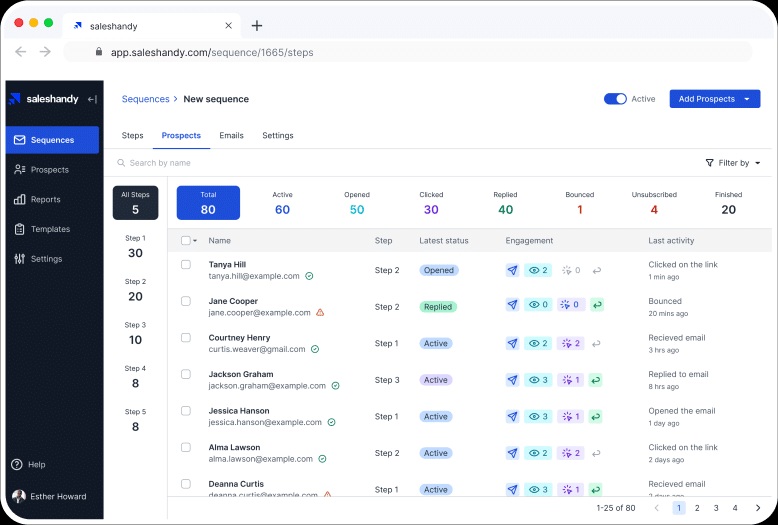
It can even generate email templates and reports and keep track of contacts and prospects.
Supported Email Clients: Gmail, Outlook (Premium)
3. Gmelius (Premium)
Gmelius is another excellent option for Gmail users that want to track and optimize internal communications.
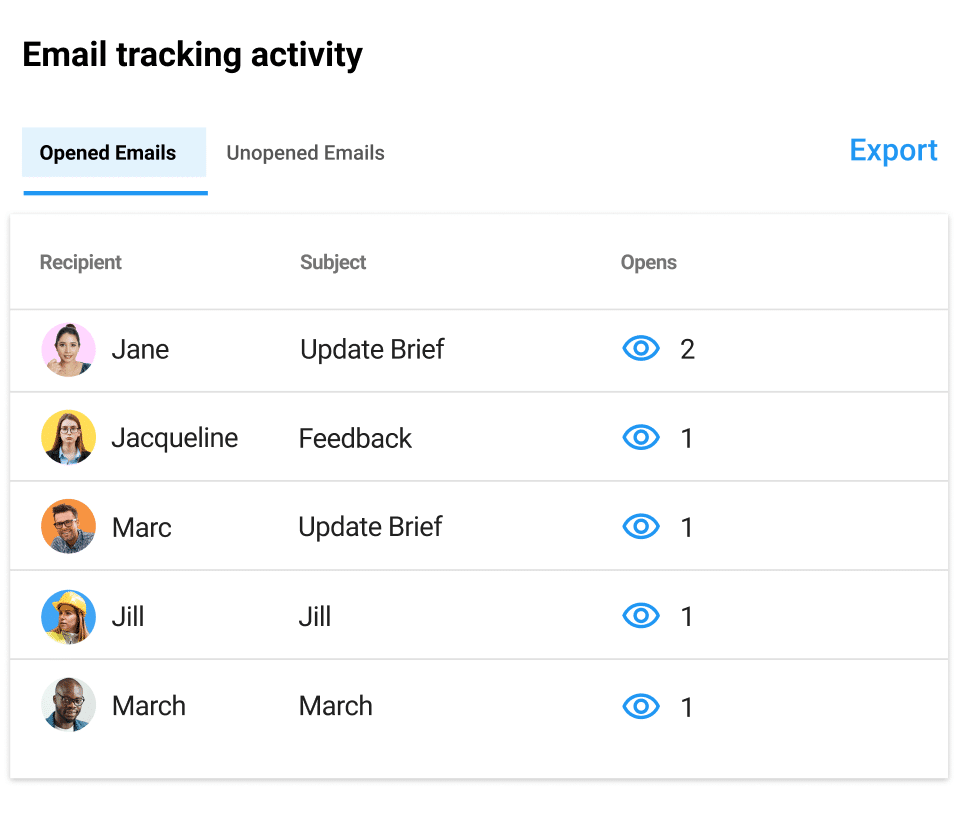
Though it has no free options, it offers plenty of features to justify the cost: in addition to open tracking and click tracking, Gmelius also offers robust email scheduling and collaboration tools. It’s not the best option for monitoring email campaigns.
Supported Email Clients: Gmail
4. Streak (Premium)
Looking for email tracking with more customer relationship management (CRM) features? Look no further than Streak.
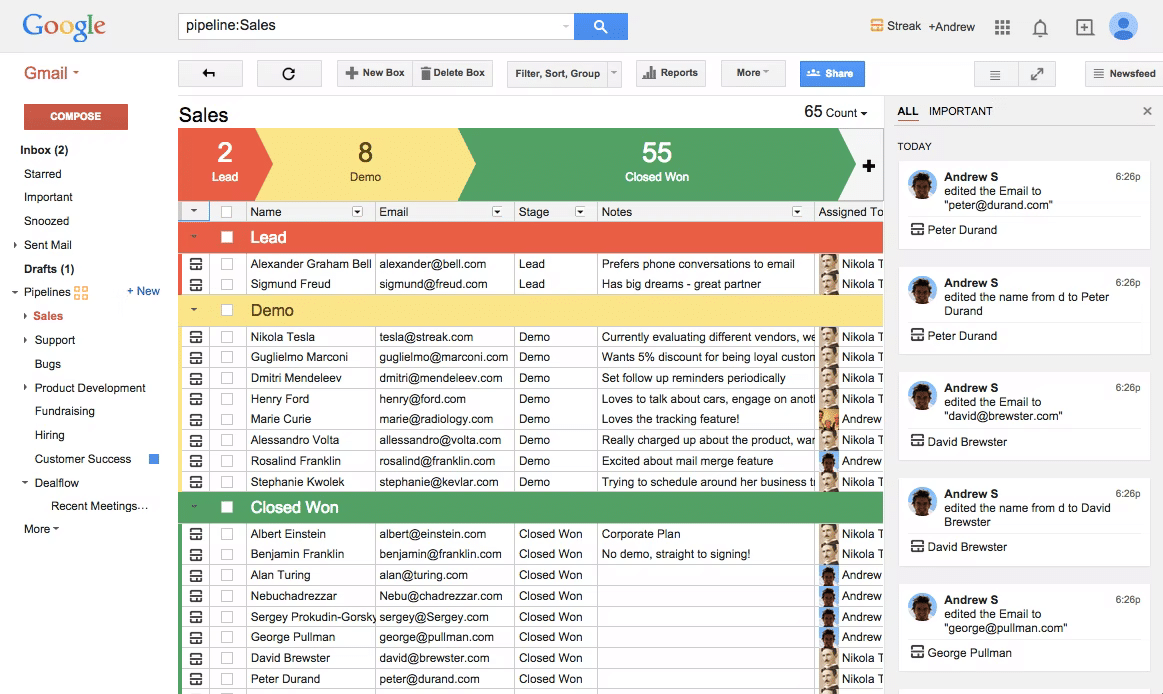
Unlike many open tracking platforms, Streak offers CRM capabilities that help you keep track of leads throughout your pipeline — and not just their inbox.
Supported Email Clients: Gmail
5. Mixmax (Premium)
Though primarily a Gmail-based productivity and sales engagement app, Mixmax also offers robust email tracking capabilities.
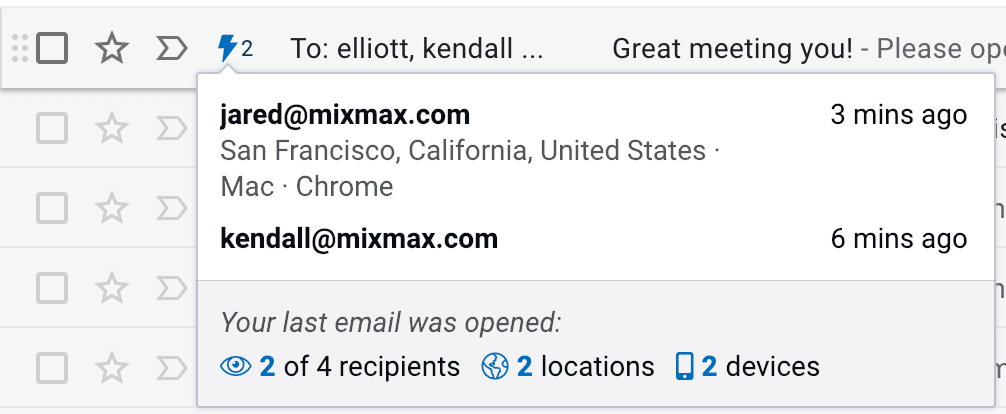
In addition to all the tracking features you might expect, Mixmax also offers additional features such as follow-up reminders, email polling, schedule tools, and Salesforce integration.
Supported Email Clients: Gmail, Google Inbox, Salesforce
6. RightInbox (Premium)
Another popular option for Gmail users, RightInbox offers both open tracking and click tracking and other features such as email scheduling, follow-up reminders, templates, and more.
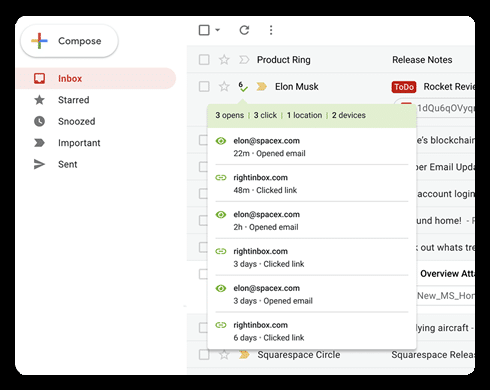
Supported Email Clients: Gmail
7. Mailchimp (Premium)
As the grandfather of email marketing platforms, it’s no surprise that Mailchimp also offers email tracking.
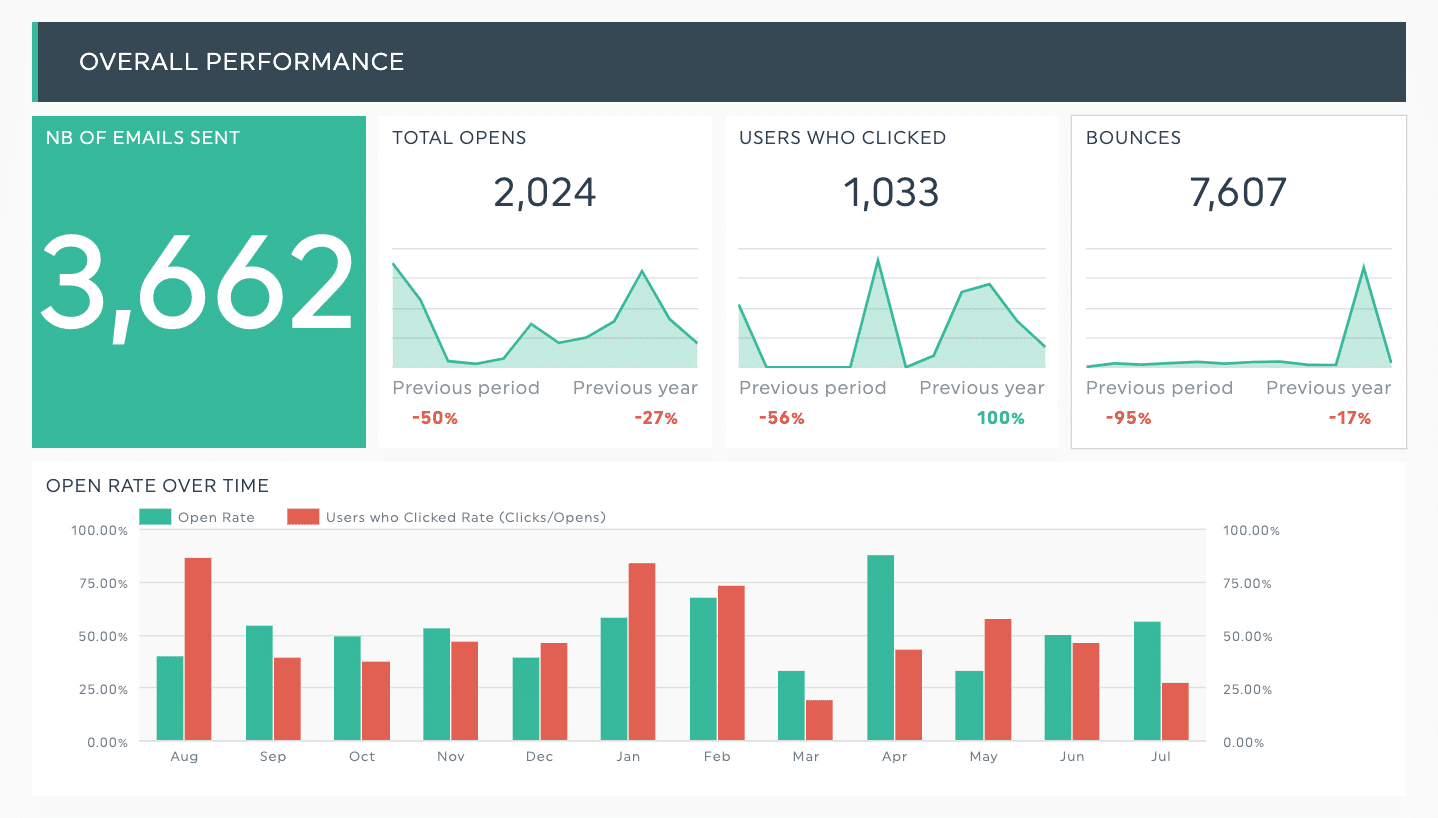
Though not exclusively an email tracking platform, it’s an excellent choice for those looking for a holistic email marketing solution emphasizing A/B testing.
If it’s not the right fit, but you want something similar, there are plenty of Mailchimp alternatives that you can check out.
Supported Email Clients: Gmail, Outlook
8. Cirrus Insight (Premium)
Though more of a sales management and marketing automation platform than email tracking software, Cirrus Insight is a unique top-of-the-line solution that completely integrates with your existing email client.
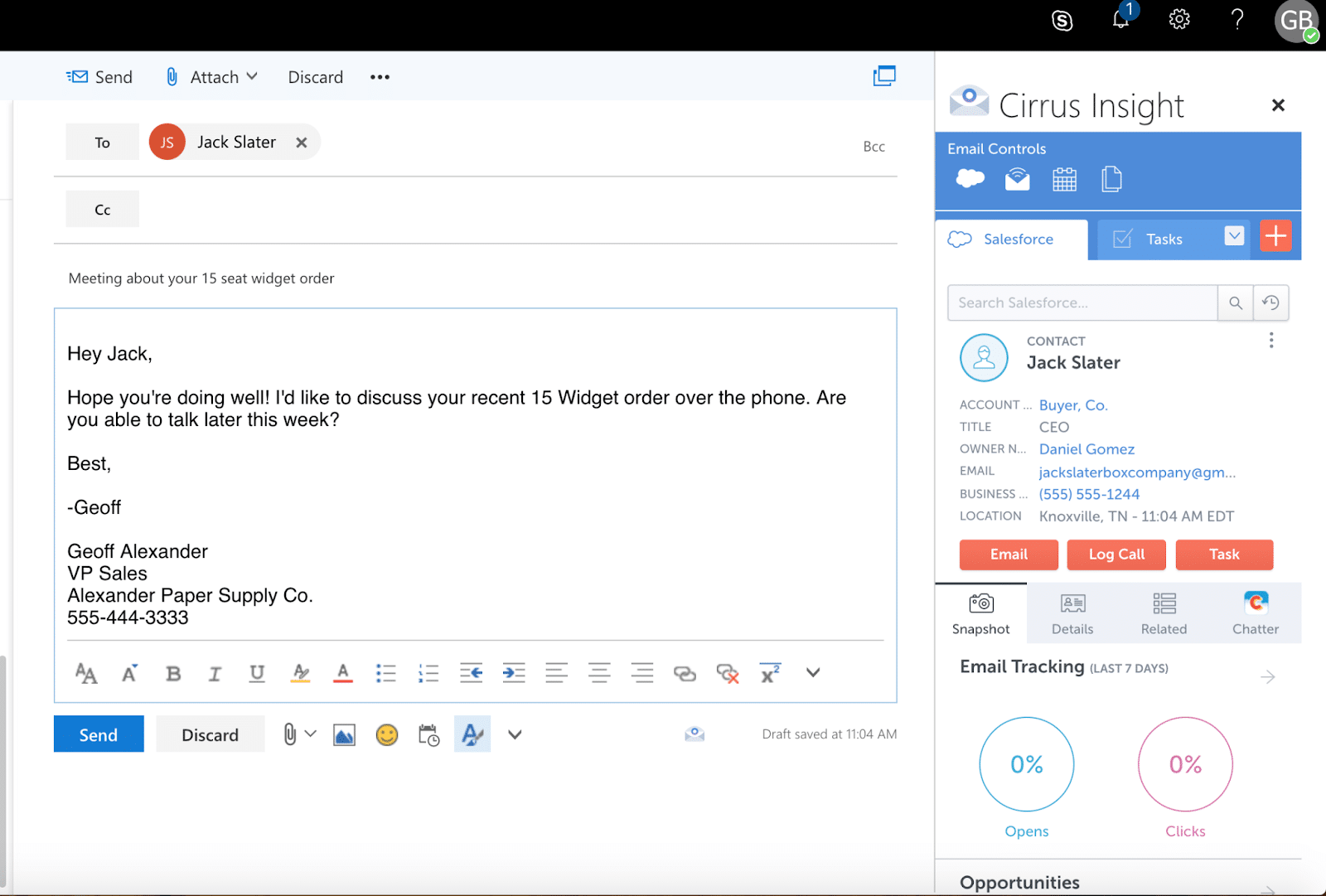
That means you get all the power of a sales platform without switching back and forth between applications.
Supported Email Clients: Gmail, Outlook
9. Yesware (Premium)
Built specifically for sales teams and salespeople, Yesware supports complete email outreach on an enterprise scale without the complexity of dedicated platforms.
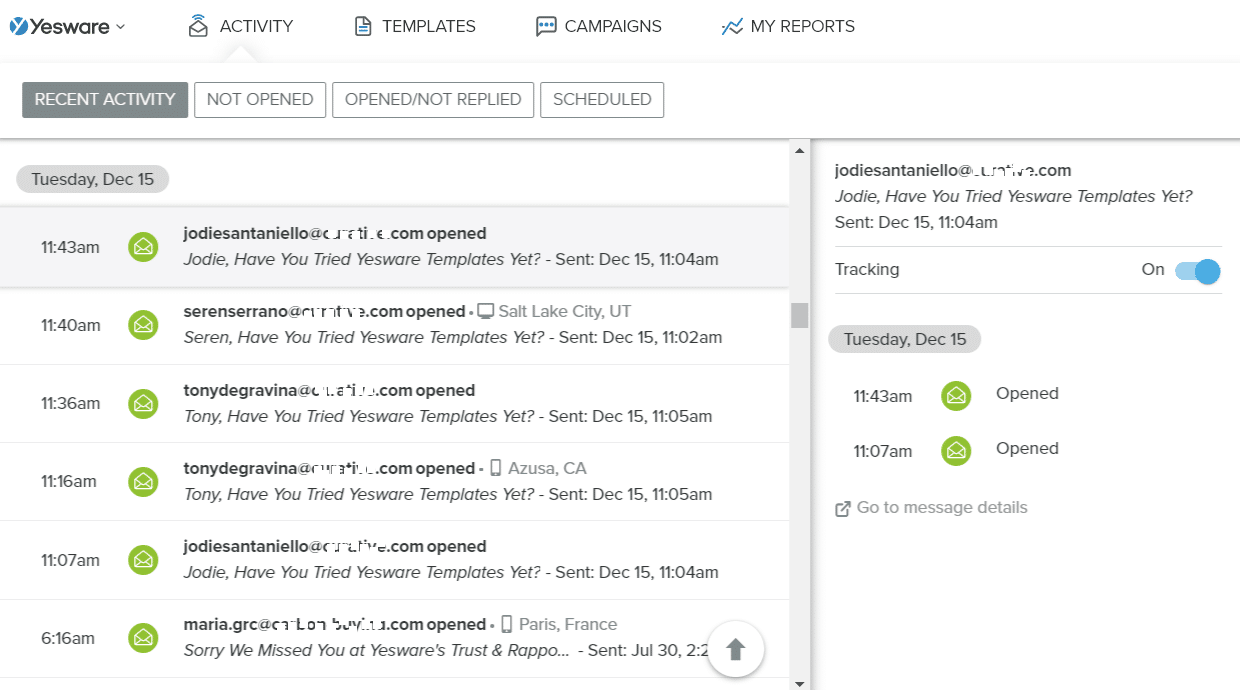
Available as a Gmail or Outlook plugin, Yesware is a smart choice for sales reps handling email outreach campaigns.
Supported Email Clients: Gmail, Outlook
10. HubSpot (Premium)
Like Streak, the HubSpot sales platform is an all-in-one CRM rather than an email tracking tool.
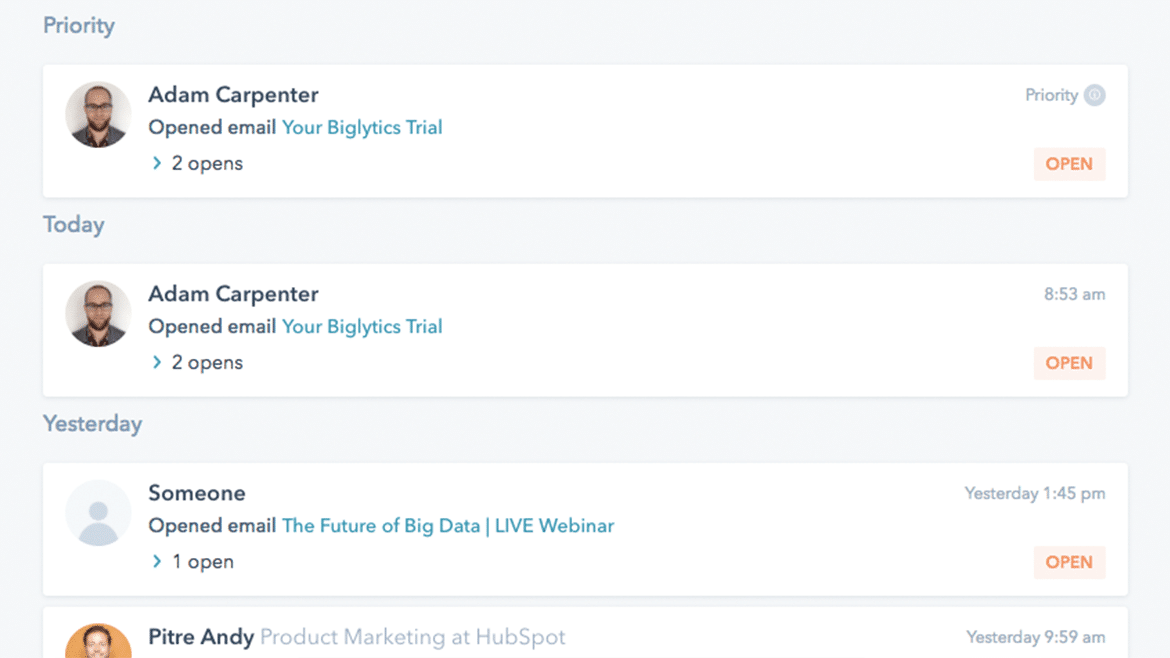
However, with robust email tracking combined with a slew of other sales management services, HubSpot is an ideal solution for anyone looking for a top-to-bottom sales and email marketing solution.
Supported Email Clients: Gmail, Outlook
Summary
Email tracking is undoubtedly one of the most powerful tools you can have in your email marketing arsenal.
You can take the guesswork out of your campaigns by knowing exactly who opens or clicks on your emails with email tracking. With the right software, you can gradually identify critical trends and insights among your contacts, helping you build meaningful customer relationships and drive more sales.
For more information on boosting your email marketing efforts, check out our email marketing tips.

